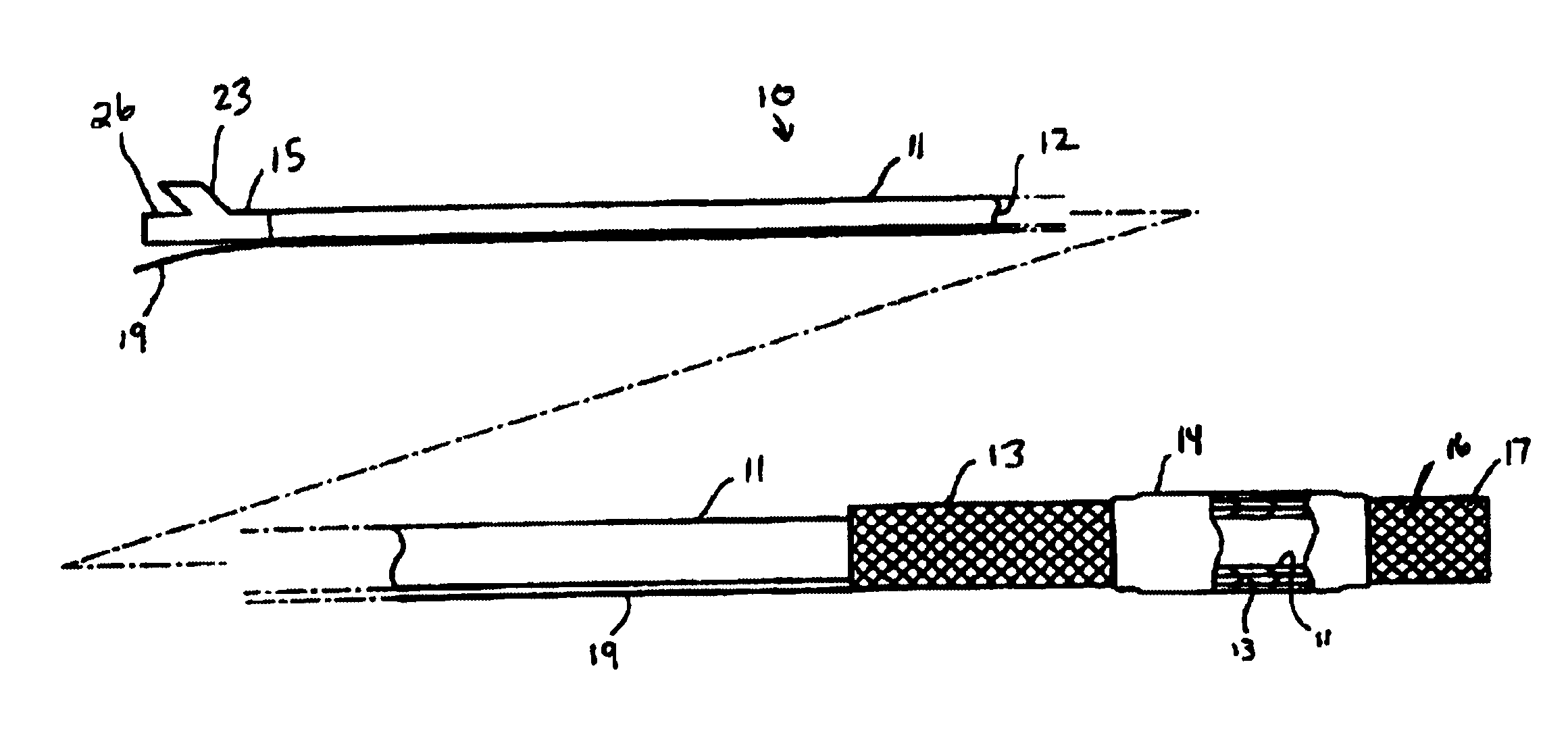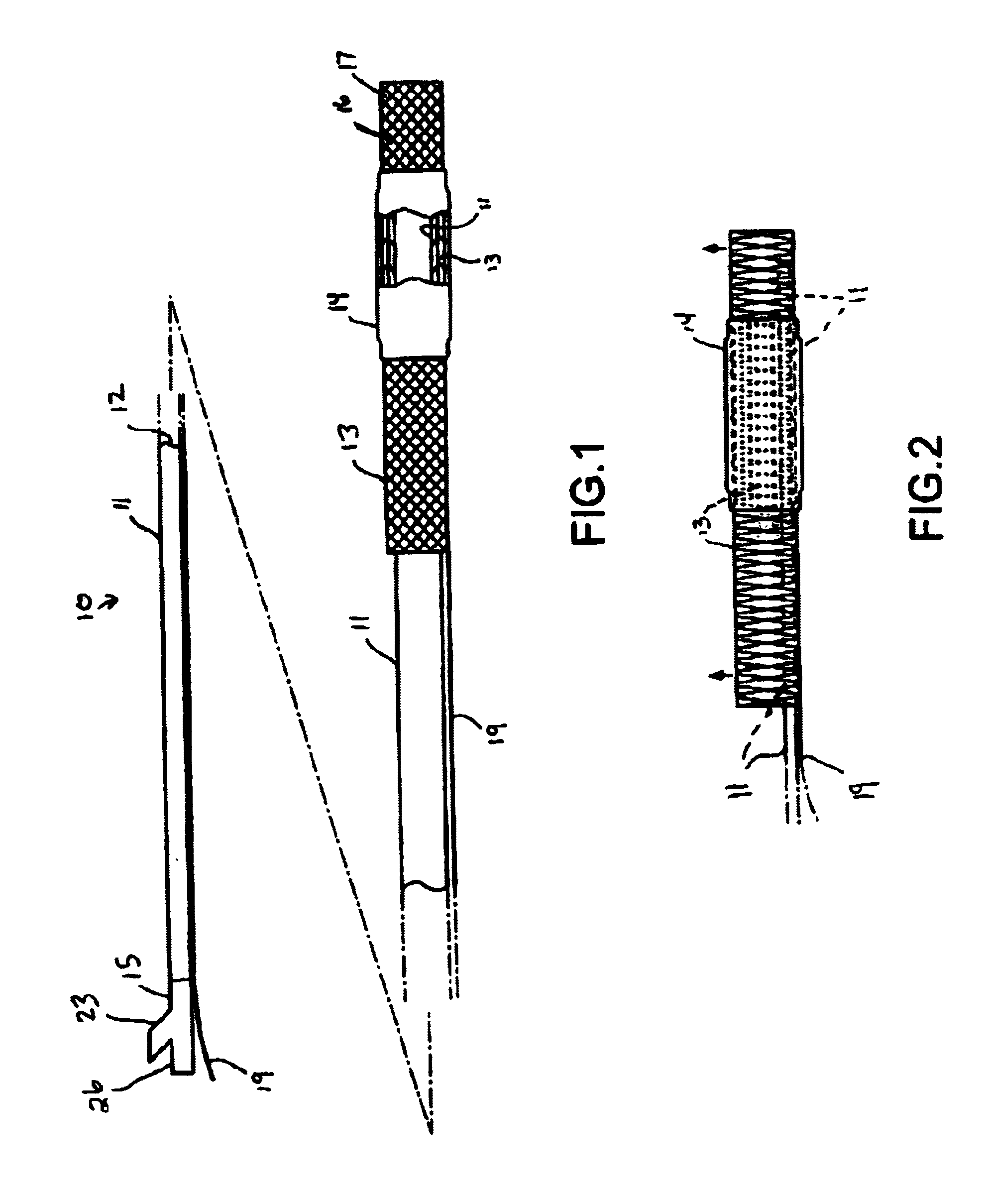Intra-aortic renal drug delivery catheter
a technology of intra-aortic kidney and catheter, which is applied in the field of medical devices, can solve the problems of patients becoming vulnerable to arf, reducing cardiac output, and patients going into arf, and achieves the effects of reducing the amount of external blood flow to the tubular member down-stream of the branch vessel, reducing and improving the amount of external blood flow to the branch vessel
- Summary
- Abstract
- Description
- Claims
- Application Information
AI Technical Summary
Benefits of technology
Problems solved by technology
Method used
Image
Examples
Embodiment Construction
[0034]FIG. 1 illustrates a catheter 10 which embodies features of the invention, generally comprising an elongated shaft 11 having a proximal end, a distal end, and at least one lumen 12 extending therein, a tubular member 13 on a distal section of the catheter shaft 11 and a radially expandable member 14 on the tubular member 13. Adapter 15 on the proximal end of the shaft provides access to the catheter lumen. FIG. 1 illustrates the tubular member and the radially expandable member in low profile, unexpanded configurations for entry into the patient's blood vessel.
[0035]In the embodiment illustrated in FIG. 1, the radially expandable member 14 comprises an inflatable balloon. The balloon has proximal and distal ends secured to an outer surface of the tubular member 13, and an interior in fluid communication with an inflatable lumen 21 (FIG. 4) in the shaft 11. The balloon 14 can be formed of a variety of suitable materials typically used in the construction of catheter occlusion b...
PUM
 Login to View More
Login to View More Abstract
Description
Claims
Application Information
 Login to View More
Login to View More - R&D
- Intellectual Property
- Life Sciences
- Materials
- Tech Scout
- Unparalleled Data Quality
- Higher Quality Content
- 60% Fewer Hallucinations
Browse by: Latest US Patents, China's latest patents, Technical Efficacy Thesaurus, Application Domain, Technology Topic, Popular Technical Reports.
© 2025 PatSnap. All rights reserved.Legal|Privacy policy|Modern Slavery Act Transparency Statement|Sitemap|About US| Contact US: help@patsnap.com



